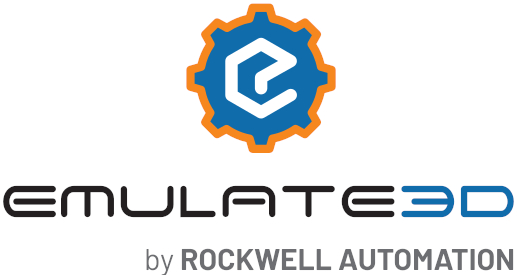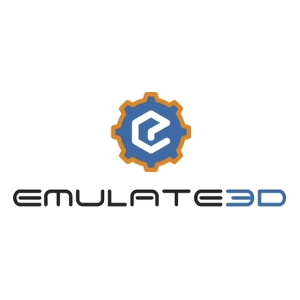Emulate3D
Controls Testing and Throughput Simulation Software for Baggage Handling Systems
Emulate3D Software Addresses Baggage Handling System Controls Testing and Throughput Simulation Requirements
Emulate3D develops controls testing and throughput simulation software for Baggage Handling Systems (BHS) engineering, and is used to reduce the investment risk and provide quantitative support for BHS design decisions wherever new terminals are built, or existing ones modified. Continued growth in airport construction worldwide has resulted in a clear requirement for robust, thoroughly tested BHS, delivered on time, and within budget.
The reputation of an airport, and those who built it, stands or falls with the ability of its BHS to deliver bags to the right place, on time, every time, in a fast-changing environment where accurate short-term planning is often impossible. Add to this the risk of incurring operational penalties each time the system falls short of contractual obligations, and it becomes easy to understand why the use of Emulate3D Controls Testing and Sim3D is so widespread within this industry.
Company Profile
-
TAKE CONTROLS TESTING OFF THE CRITICAL PATH
Emulate3D Controls Testing provides users with a flexible test bed to ensure the BHS control system will operate to specification, be delivered on time, and within budget. By replacing the real BHS with an accurate model, users can test the control system before the real system exists, taking logical controls testing off the project’s critical path.
Testing can take place in parallel with the system build, reducing overall project time, and users can run and test the virtual system on several computers simultaneously, accelerating the process. Virtual baggage arrivals are under the control of the user, so the number and the nature of incidents to be tested can be designed into the testing procedures so the system response can be closely observed.
Virtual commissioning takes a significant part of acceptance testing off the project’s critical path, enables users to test exhaustively and repeatably under office conditions, as well as reducing on-site time and costs just before the most sensitive project phase – handover.
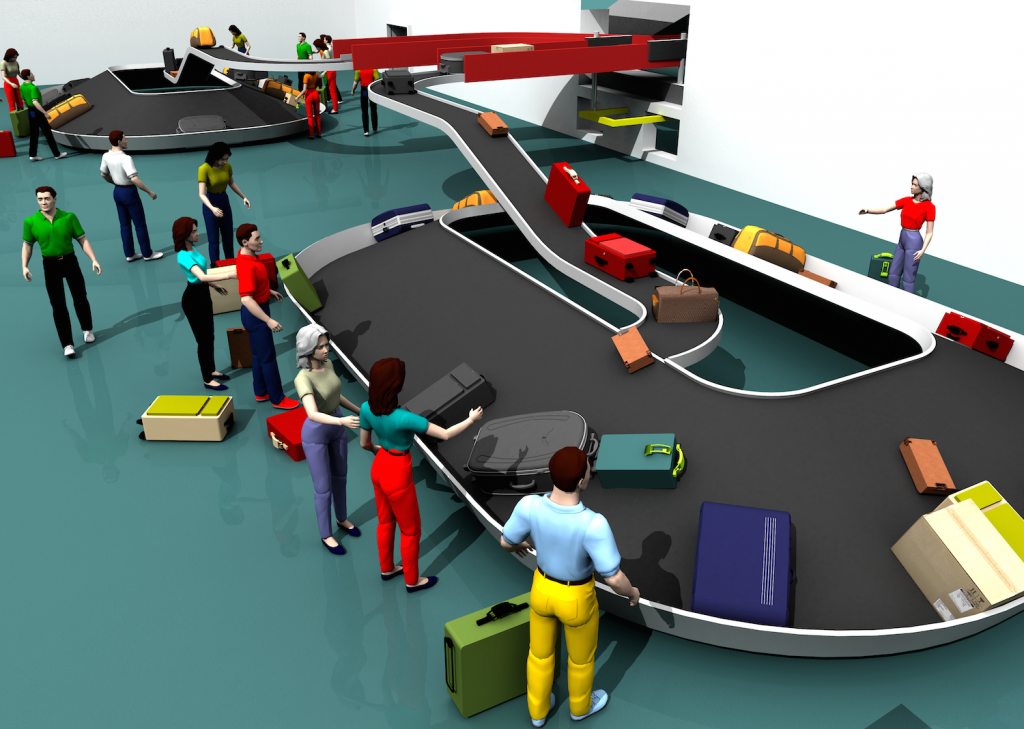
-
HOW TO CREATE A VIRTUAL BAGGAGE HANDLING SYSTEM
Emulate3D Baggage Handling models are built from supplied catalog items which accurately represent the equipment commonly used in BHS. Users can modify these items to exactly suit their requirements, or easily replace them with their own company-specific equipment. Modeled equipment is a faithful facsimile of the real equipment, complete with acceleration, deceleration, top speed, and even coefficients of friction between belt material and baggage, where appropriate.
By connecting the actual logical control system to the model, and running modeled baggage through it, users have a reliable sandbox to accurately test the controls, months before the real system is available. Furthermore, models can be reset at the click of a mouse and the complete range of tests restarted within seconds of a modification being implemented, which is impossible in a traditional testing environment where manual handling is unavoidable.
Modeled bags contain the same unique data as the bag tags created at check in, and as bags progress through the model this information is read and passed to the control system by virtual bar code readers. Bag presence is detected by virtual photo eyes connected to the external control system, and conveyor sections are switched on and off as a result of this information.
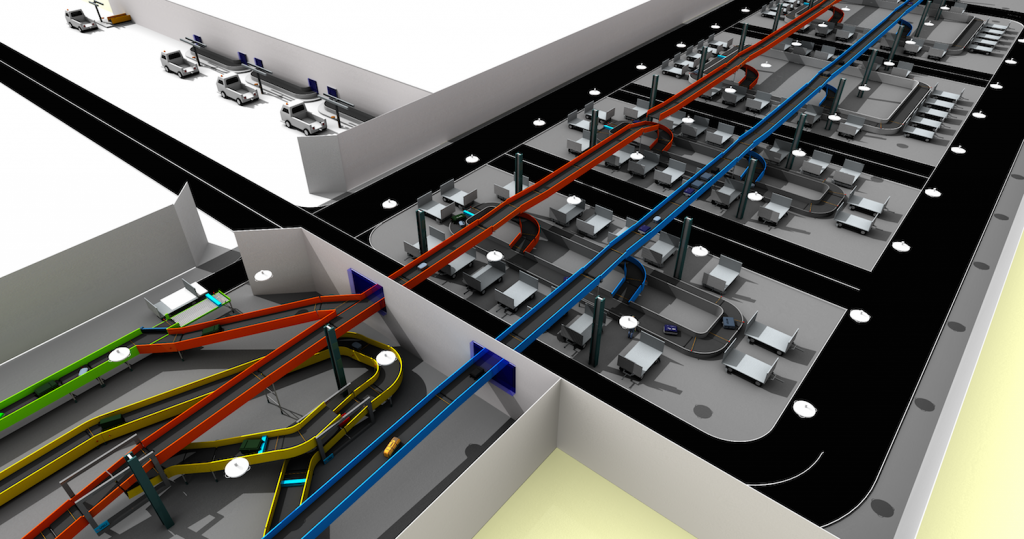
-
BENEFIT FROM THE EMULATE3D MODELING FRAMEWORK
The Emulate3D modeling environment is a flexible framework – not only are industry-standard equipment catalogs supplied, but users can also importCAD from a wide range of formats such as Autodesk Inventor, SOLIDWORKS, Trimble SketchUp, and many more. Efficient workflows can be developed by generating models automatically from existing CAD layouts, then connecting programmable logic controllers’ (PLCs) inputs and outputs to the model.
The range of automation equipment users can include in their models is unlimited, as the framework supports the ability to create new systems with their own proprietary behaviours.
Standard systems currently available include:
- Check-in systems
- Conveyor-based delivery systems
- Vehicle based delivery systems
- Tilt tray sortation systems
- Early bag storage systems
- Explosive Detection Systems
- Crane and rack systems
- Mini-loads and tote based systems
- Merges and diverts
- AGVs and AMRs
Emulate3D BHS models can be connected to, and driven by, controls at both a high and low level, from flight dispatching systems to Programmable Logic Controllers (PLCs).
Users can currently connect to the following control systems:
- Allen Bradley – ControlLogix, CompactLogix, MicroLogix, Ethernet/IP, CIP Class 3, CIP Class 1, PCCC, RSLinx, FTLinx. Auto-optimization: Protocol analysis, tag database analysis, tag merging
- Siemens – S7-300, S7-400, S7-1200, S7-1500, SIMIT Unit, PROFINET, PROFIBUS, S7 Functions, PUT/GET
- Mitsubishi – FX, MELSEC-Q Series, SLMP, MX Component
- Beckhoff – TwinCAT 2, TwinCAT 3, ADS
- And more
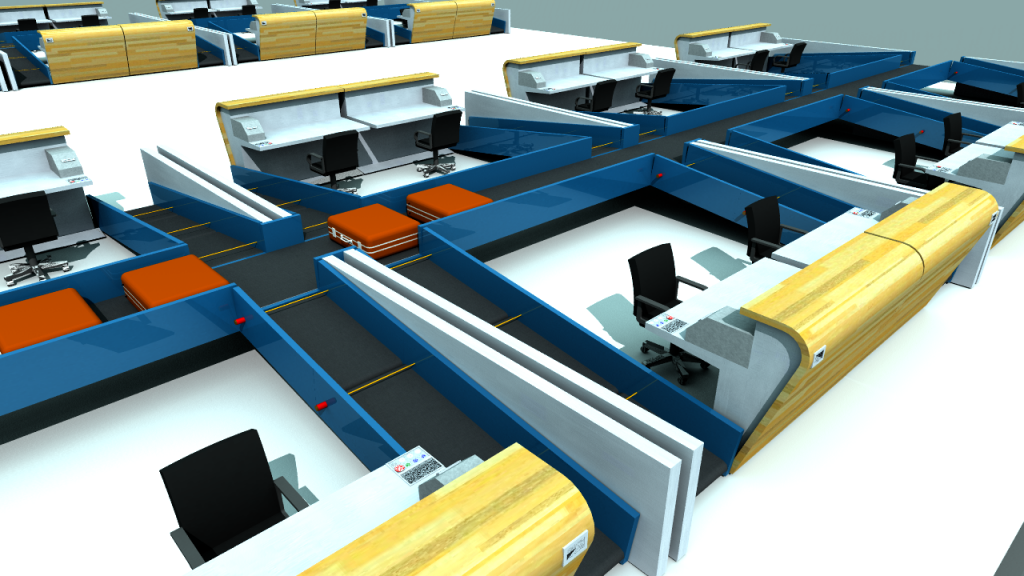
-
EMULATE3D REDUCES BAGGAGE HANDLING SYSTEM COMMISSIONING COSTS AND RISKS
By taking the logical controls testing off the project’s critical path, your testing program is no longer subject to manufacturing and installation delays. For the same reason, testing in a virtual environment can begin earlier in the project cycle, be available 24/7, be more exhaustive and traceable than would otherwise be possible, and still be completed within schedule.
Removing the majority of testing from the end of the project also means you’ve removed a major source of uncertainty from the schedule, making both cost and time estimates more accurate.
-
SIM3D IS THE BACKBONE OF BAGGAGE HANDLING SYSTEM DESIGN
BHS simulation models are designed to answer questions about how systems respond to different passenger and baggage arrival rates, transport equipment choices, storage capacities, staffing levels, and so on, under a range of different operating strategies and conditions.
BHS dimensioning and design requires a numerical approach to reinforce equipment and operating strategy choices, and Sim3D provides this support. Sim3D throughput simulation enables design engineers to create flexible data-driven models that highlight baggage flow issues and enable all stakeholders to understand and develop their ideas.
Ensuring stakeholders have a shared vision of the project throughout development is central to an efficient approach – Sim3D provides users with many options including videos, the ability to view models using a wide range of Virtual Reality devices, or simply emailing a running visualisation to a smartphone.
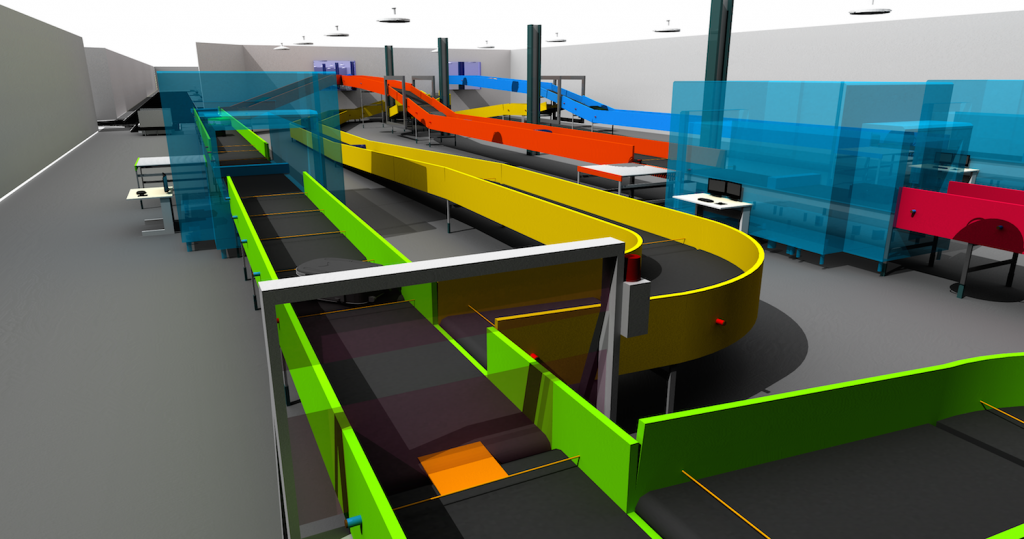
-
DESIGN BETTER BHS WITH EMULATE3D
Emulate3D technology reduces the risk associated with designing complex systems, and helps you communicate your solutions effectively to the project stakeholders.
Your reputation depends on delivering a high quality system on time and on budget, and Emulate3D technology is an essential tool to help you achieve that.
Images
Company News
Catch Emulate3D Live Events in Nagoya & Ann Arbor
Contact
Reading Enterprise Centre
Earley Gate
Reading
United Kingdom
RG6 6BU
